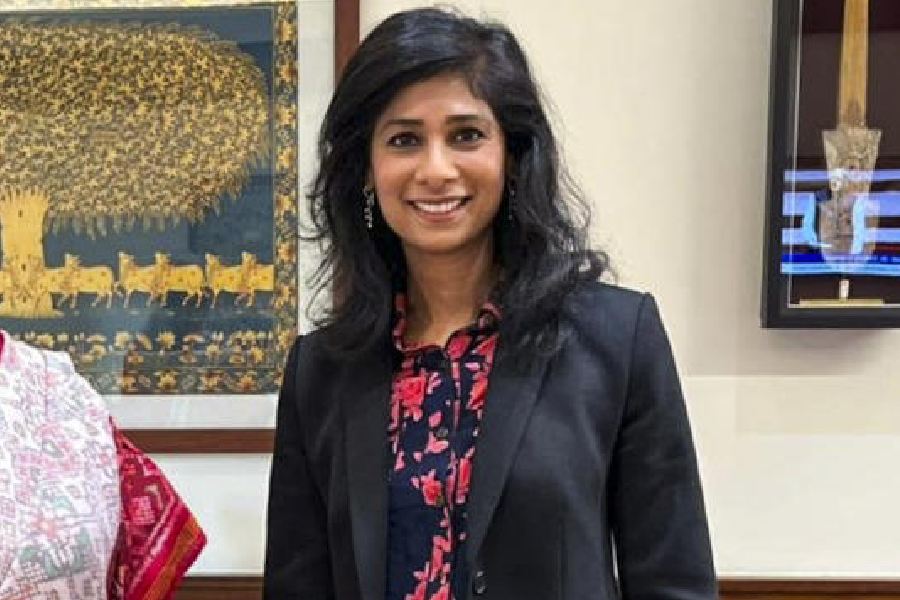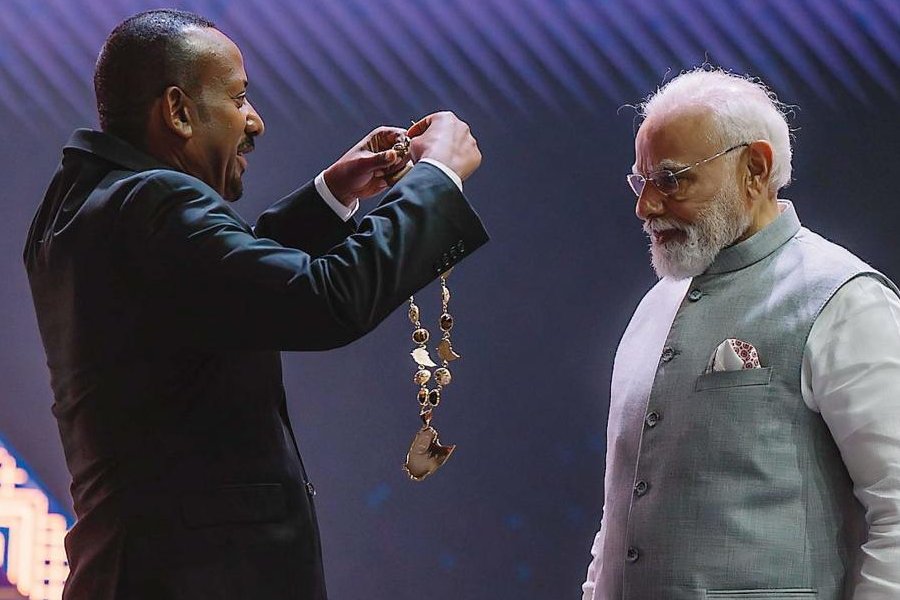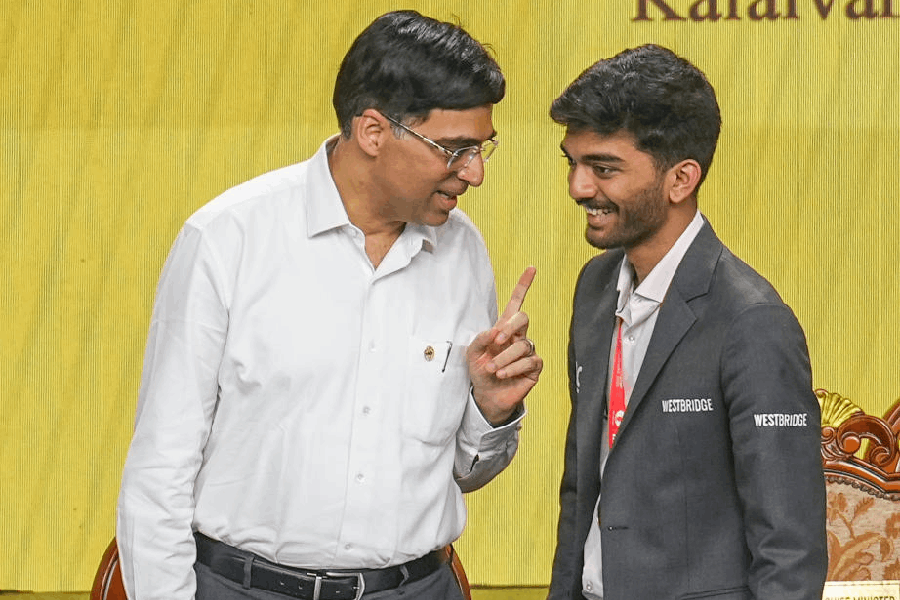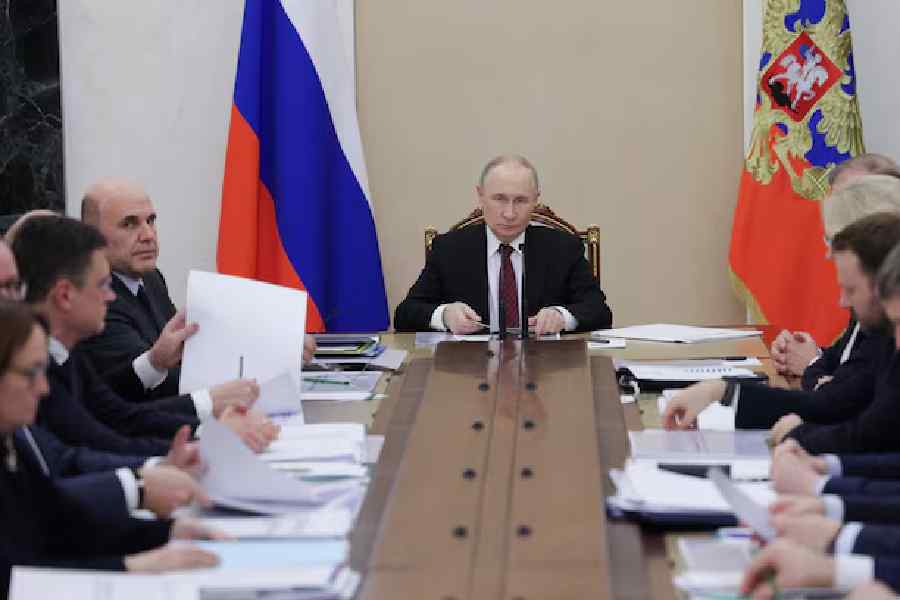 |
 |
| YES BOSS: A. Raja and (below) Siddharth Behura after their arrest |
It was a déjà vu moment when pictures of former telecom minister A. Raja, former telecom secretary Siddharth Behura and former telecom department economic adviser R.K. Chandolia being arrested by the Central Bureau of Investigation (CBI) in the 2G licence scam were aired. Fifteen years earlier, similar pictures of another telecom minister, Sukh Ram, and a telecom department official, Runu Ghosh, arrested in another telecom scam dominated the front pages of newspapers.
The latest telecom scam has once more turned the arc lights on the relationship between politicians and bureaucrats. “Take any scam and officials are invariably involved,” says T.S.R. Subramanian, former Cabinet secretary.
The big question, of course, is whether a bureaucrat can defy his minister if he believes that the political master is intent on skirting the straight and narrow. Connivance, says N.C. Saxena, a retired bureaucrat and member of the National Advisory Council, isn’t always active. It can also be passive.
Indeed, the Shivraj V. Patil Committee, which looked into the issue of 2G licences, indicts the role of over 40 bureaucrats — from secretary down to director — in the telecom department, many of them for not opposing their minister strongly enough.
Scams occur wherever a minister has discretionary powers — to grant licences or other favours — which become a source of corruption. However, mechanisms in the system exist, enabling bureaucrats in a ministry, especially the secretary, to check minor and major ministerial transgressions.
A secretary can put his objections in writing on the file itself. If the minister overrules him, he can again put down his arguments either on the file or in a “routine note” (a separate note that need not necessarily be part of the file). The file can be sent to another ministry if the matter has some relevance to it. If the minister overrules the secretary a second time, the decision has to be implemented. However, if a secretary feels that an unconstitutional or corrupt act is being committed, the matter can be referred to the law ministry and taken up with the Cabinet secretary (the chief secretary in the states), in writing.
A secretary cannot, however, refuse to see or sign files, as former telecom department secretary D.S. Mathur did when Raja did not heed his advice on 2G licences. That, say former bureaucrats, is a complete abdication of responsibility. “The secretary has a constitutional obligation to perform,” notes N.K. Singh, Rajya Sabha MP and former revenue secretary.
 |
 |
| FLASHBACK: Former telecom minister Sukh Ram and (below) telecom department official Runu Ghosh |
Referring the matter to the Cabinet secretary isn’t rare. The secretary of an infrastructure ministry complained to Subramanian that his minister was forcing him to do something illegal and sought a transfer. Subramanian called for the file, wrote a note and sent it to the Prime Minister, who overruled the minister. In the first UPA government, the secretary of a social sector ministry referred a matter to the Cabinet secretary after the minister overruled objections to the redesign of a social welfare scheme.
Service rules also give bureaucrats ample protection. Officials, the rules say, must perform their duties in a “true and correct” manner, except when “acting under the direction” of a superior officer. Such direction has to be in writing. If an oral direction is unavoidable, the senior officer must put it down in writing soon after, or else the junior official must seek confirmation of the verbal order in writing. Former finance minister Yashwant Sinha, who was a bureaucrat for 24 years, says that as a minister he always passed “speaking orders” where a minister puts down his reasons for insisting on a certain course of action the bureaucracy disagrees with. On no account, says Sinha, should a secretary change his note or his opinion on the verbal instructions of the minister.
But that is precisely what happens. “The cunning bureaucrat has short-circuited normal processes,” rues Subramanian. At a mere indication from the minister, files are initiated by a junior officer and there is manipulation at each stage of its passage, so all that the minister has to do is just sign. Sinha cites the example of mining leases being given to a key accused in the Rs 2,000 crore money-laundering scam in which former Jharkhand chief minister Madhu Koda is facing charges. “Only officials could have put notes on files, which Koda must have approved. Ministers don’t know government procedures.”
Upright secretaries are often bypassed with the help of junior officers. One Andhra Pradesh chief minister, who found his chief secretary a tad rigid, wrote on a file that he agreed with the chief secretary but something noted on a previous page (a note by a junior official which favoured his point of view) may be done. The chief secretary realised the implications only later.
When did the wall between the bureaucracy and the politician start crumbling? Somewhere in the mid-1970s, when the then Prime Minister, the late Indira Gandhi, came up with the idea of a committed bureaucracy. “What we are seeing now is a logical outcome of the committed bureaucracy idea,” says Gautam Pingle, director of the Centre for Public Policy, at the Hyderebad-based Administrative Staff College of India.
Good postings Access to money-spewing projects Political contacts |
Oppose and suffer |
Punishment postings Ignored and sidelined Adverse appraisals |
Posting and transfers are liberally used to ensure a pliable bureaucracy. “The fact that there are uncertainties in the tenure of offices, that placements have little relation to merit, and bureaucrats are made to feel that they owe their position to a particular minister has a bearing on the behaviour of officers,” says Singh.
Though the Cabinet secretary and the chief secretary — the head of the civil service at the Centre and state, respectively — are supposed to play a crucial role in postings and transfers, that rarely happens. There was a time, recalls Subramanian, when a minister would not get a secretary of his choice. “We wanted an arms length, not hand-in-glove, relationship between the minister and senior officials.” Now, however, ministers demand and get even junior officials of their choice, rues Sinha.
The Cabinet secretary and chief secretary can refuse to oblige, but often don’t get the support of the Prime Minister or the chief minister, who are under pressure from ministers. The problem, says Singh, gets exacerbated in coalition governments, where demands by allies are difficult to ignore. Conversely, inconvenient bureaucrats are shunted out to insignificant posts or to remote locations and adverse comments made in their annual confidential reports. That’s in marked contrast to the British civil service on which the Indian system is patterned. The bureaucracy in a particular ministry is permanent, notes Pingle, and cannot be transferred to a different ministry.
Politicians alone aren’t to blame. Bureaucrats also curry favour with politicians. “Civil servants want power, important positions, foreign postings,” says Saxena. Or they may simply want to play it safe. “The bureaucracy must understand that the fight between the bureaucrat and the politician has always been an unequal one and remains so. Bureaucrats may have to pay the price for standing upright by losing a good post or being shunted out, but they have to pay that price to ensure the system remains intact,” says Sinha.
Now if only it were that easy.










